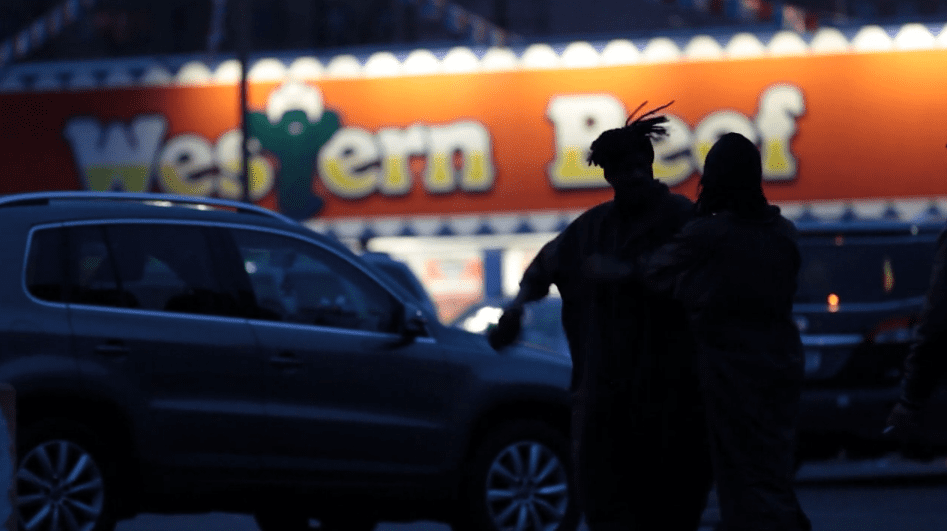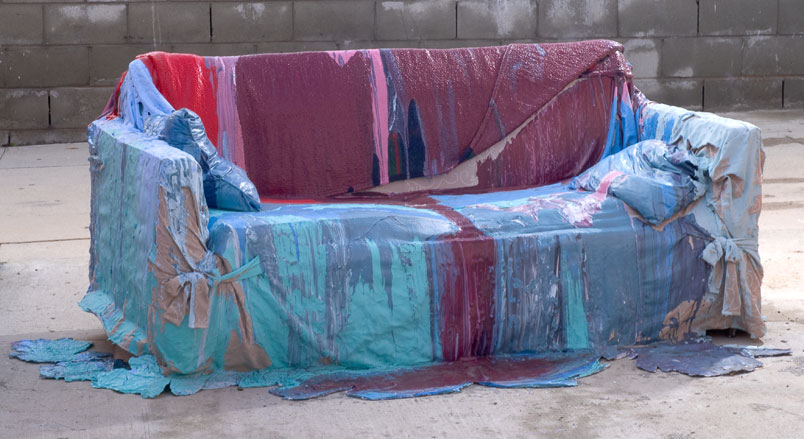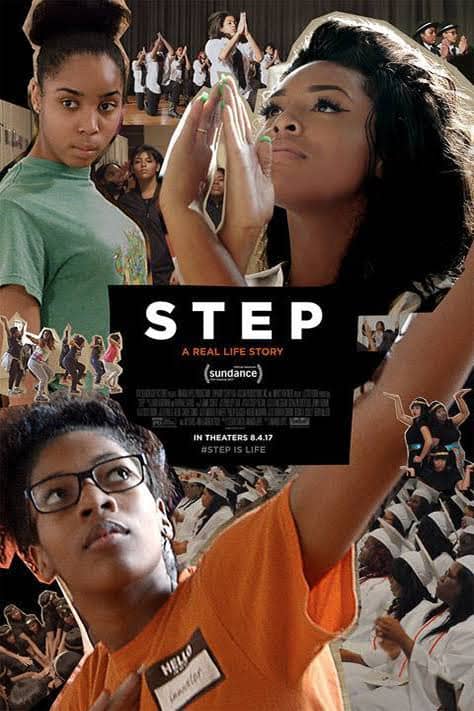Above: Note: This scene is direct commentary to the Whitney Biennale, which shares initials with the featured Western Beef storefront. Two YAMS collective members, Koo and Luvinski, dress up as janitors and pretend to fight each other in the parking lot. Shields comments: ” The feeling I had for that scene was [how to use ] invisibility and hypervisibility… against institutions like Whitney Biennale, who traumatize us in staged ways.”
It’s difficult to know what to expect with GoodStock On The Dimension Floor (2014). The screenshots of it online had pretty colors, a woman’s face in double, looking Afrofuturist and trendy — perfect fodder for the Whitney Biennale, where it was a part of the show. After typing in the password to a private Vimeo account, the video jumps up, and without preamble, tightly focuses on a large piece of beef, lying in the sand.
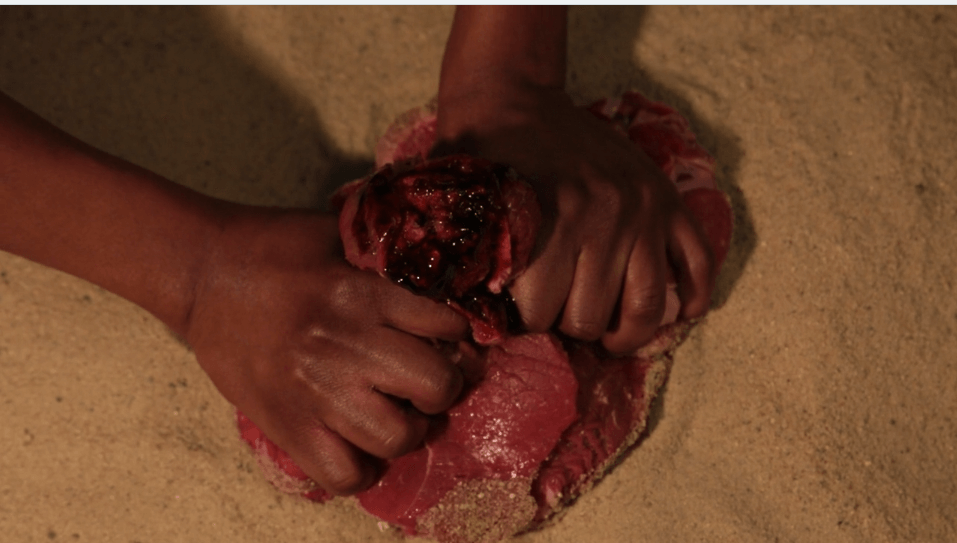
Above: Nave, Scene 1 from the opera GoodStock On The Dimension Floor (2014).
After a few seconds, a big brown fist starts pounding inside its vaginal-like slit filled with thickened blood, pumping the vicious gash into a wet sandy shore; then, black feet in black crew socks stomp into the blood and soil. In the background, the following words were sung, over and over:
Mother[Earth] as brown as— brawn and braided, toward—filth beneath, skin like wire—all our kin.
GoodStock is a violent, untamed, cerebral opus to the African Diaspora’s struggle to reclaim its ancestry and identity. During an interview with this article’s author, filmmaker, and HowDoYouSayYamInAfrican? Collective (YAMS for short) member Sienna Shields explained the symbolism behind the stocks: “[The opening scene] is an homage to John Carlos, Tommi Smith and all those who decide to risk careers and comfort to stand up to supremacy. They lost their careers because of their stand…and [their bravery] fed me more than any food could throughout my life.” Shields commissioned LBGTQ poet and scholar Dawn Lundy Martin to write Goodstock’s libretto because her past writings played an integral role in Shield’s self-actualization.
Many YAMS Collective members (or YAMmers) voiced and took on the three main roles in the film, which are personifications of the ongoing cycle of creation and destruction, loss, and redemption. The project, with music production by longtime friends and fellow YAMmers Poszi Kolor and Kobie Maitland, is a symbolic protest to her experiences as a woman of color in the elitist art world and was pulled from the Biennale in protest of their curatorial bias.
Lundy drew inspiration for the libretto from the characters in FunnyHouse of a Negro; the genre-defying Adrienne Kennedy play that featured Black ghosts hiding behind white masks of respectability, shedding flowing mounds of straightened hair. In Goodstock, the white masks disappear; the European hair of Kennedy translates its importance to the film’s multicolored hair beads, serving as the focus of several scenes and as a call of remembrance for the lost home of Africa.
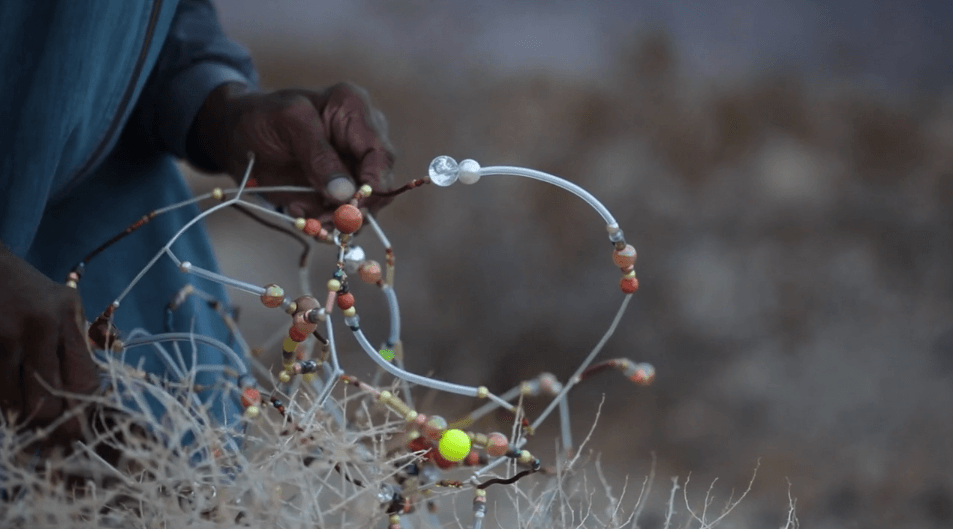
Above: Nave, Scene 10 from the opera GoodStock On The Dimension Floor (2014).
But what’s wrong with leaving those beads behind, in favor of more modern forms of expression? Can’t Black people, after many generations of living in America, claim this country and its customs?
All throughout the film, we see different members of the YAMS Collective embody the cyclical roles of homes and identities lost: Perpetuus is the distorted, melanin-rich reflection and eventual reincarnation of Land, who changes back and forth between phases of existence and nothingness. These two are in steady view of the Nave, a mutable presence that struggles to unpack western expectations and her own self-hatred- a direct contrast to the brain-addled, white-worshipping heroine Sarah in FunnyHouse. The pronoun for each role is ‘her’; however, all three of these characters allow the many YAMS members to flow effortlessly between social and gender confines and repeatedly reincarnate their physical form.
In one scene, Nave, physically represented by Shields and her father George Williams, chants on how to reclaim her true face and self amid overwhelming loss, filth, and degradation. Pozsi Kolor serves as the diegetic singer:
Stare through this window in
my belly where my mother
left her good stock, her pertinent cells,
her matter that matters—
Tiny particles forever floating—
What is more frightening than a black face
confronting your gaze from the display case?
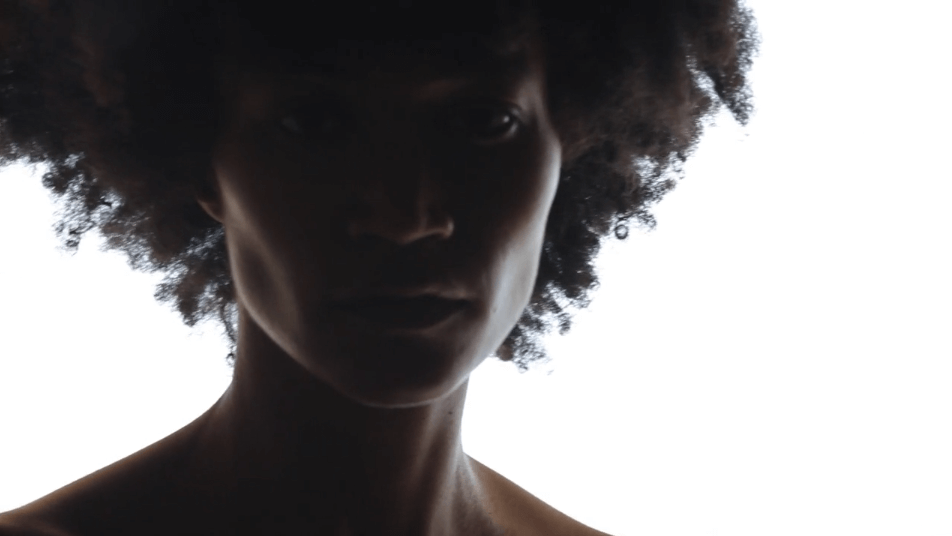
Above: Land Scene 8 from the opera GoodStock On The Dimension Floor (2014).
In another scene, the character Land takes form, directly commenting on her masked and suppressed identity. YAMmers Annielee Moffett’s vocals and Kelsey Lu’s cello fill out one of Land’s disembodied voices; Mey Bun shoots the scene, with Shields’ face as a shadowy mask:
Wound resurfaced, unlocks, a face in my hand, white sinews visible. It startles—this flesh against skin, a reminder but for tree depths, I can see them, my reflection, stone black as ice, bulging body, a root to depth. Obscured by hammer of whiteness. Organs collapse in bright fortress.
Land, the sacred mother who was raped through the exploitation and theft of her resources and people, grieves for the loss of her innocence throughout different segments of the film. Her pain is overwhelming the reason for her existence. Possibly, it mirrors some Black people’s pain from not knowing their African ancestors; or the fear that their main purpose is only to survive, not thrive, in a nation that is hostile to the deep color of their skin.
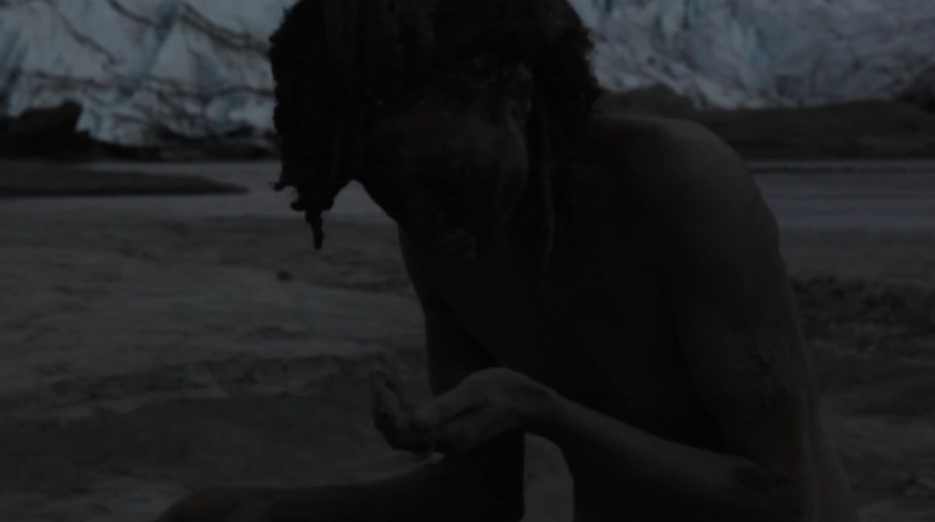
Above: Nave from the opera GoodStock On The Dimension Floor (2014).
And what happens, when a stolen people assimilate into Western society and create a caste system based on the subsequent lightening of skin? Should darker people covet the golden-skinned ticket to illusory success in this culture? Is such envy a form of self-hate? As a response, Goodstock takes cautionary inspiration from Funhouse ’s high-yellow Sarah; she feels compelled to slander her Black father as a rapist and brute, in a sad attempt to claim the white beauty and social acceptance of her mother. GoodStock abandons this agony of identity and instead celebrates the rich melanin in its actors’ skin.
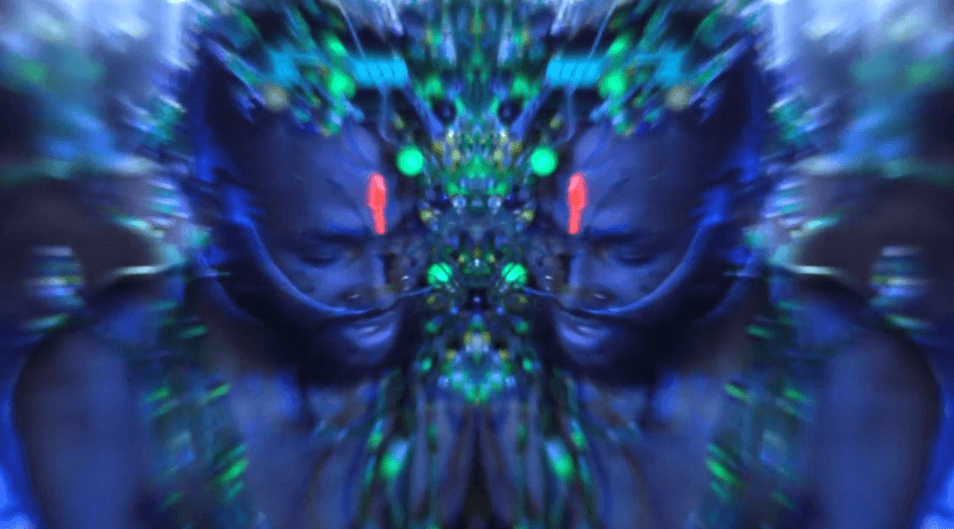
Above: Perpetuous from the opera GoodStock On The Dimension Floor (2014).
The ultimate axiom of this film is that fetishization and white worship leads to destruction, and self-love (of blackness, of ancestry, and of African/native land) can lead to salvation. In one scene, the kaleidoscopic, doubled images point toward Perpetuus’ eventual split with the equally beautiful, yet tortured Land. As the scene progresses, Perpetuus completely takes over. Adiam Mengis’ vocals give light, and YAMS players Dachi Cole, Candice Williams, Pozsi Kolor and Eliot Glass lend physical form:
We untangle—
de-strange
our map-pings.
We are remove,
the warrior in
living outer space,
incandescent. Open scab
—legend—and find uncut
surface. No return.
Perpetuus, ethereal and balance personified, signifies a point of completion within an ongoing cycle, as opposed to a direct path forward. All of the roles in the opera represent the idea of quantum time, where the past, present, and future co-exist in a single state, a torus of trauma, and redemption. GoodStock tells its audiences that it is not simply the future that they can change- it indicates that they can also change how they perceive the distant past and come face to face with the present.







